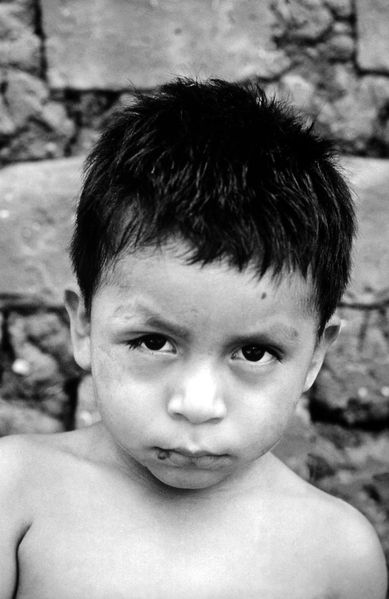Chagas disease physical examination: Difference between revisions
No edit summary |
|||
| Line 6: | Line 6: | ||
==Overview== | ==Overview== | ||
Patients with Chagas disease often present with swelling of the eyelids near the bite wound, enlarged lymph nodes, hepatosplenomegaly, and [[cardiomegaly]]. | |||
[[ | |||
==Physical Examination== | ==Physical Examination== | ||
| Line 13: | Line 12: | ||
*[[Irregular heartbeat]] ([[arrhythmia]]) | *[[Irregular heartbeat]] ([[arrhythmia]]) | ||
*[[Rapid heartbeat]] ([[tachycardia]]) | *[[Rapid heartbeat]] ([[tachycardia]]) | ||
===Skin=== | |||
The most recognized marker of acute Chagas disease is called Romaña's sign, which includes swelling of the eyelids on the side of the face near the bite wound or where the bug feces were deposited or accidentally rubbed into the eye. | |||
[[Image:Chagoma.jpg|thumb|centre|This child from Panama is suffering from Chagas' disease manifested as an acute infection with swelling of the right eye (Romaña's sign). Source: CDC.]] | |||
===HEENT=== | ===HEENT=== | ||
Revision as of 21:54, 22 April 2013
|
Chagas disease Microchapters |
|
Diagnosis |
|---|
|
Treatment |
|
Case Studies |
|
Chagas disease physical examination On the Web |
|
American Roentgen Ray Society Images of Chagas disease physical examination |
|
Risk calculators and risk factors for Chagas disease physical examination |
Editor-In-Chief: C. Michael Gibson, M.S., M.D. [1]; Associate Editor(s)-in-Chief: Raviteja Guddeti, M.B.B.S. [2]
Please help WikiDoc by adding more content here. It's easy! Click here to learn about editing.
Overview
Patients with Chagas disease often present with swelling of the eyelids near the bite wound, enlarged lymph nodes, hepatosplenomegaly, and cardiomegaly.
Physical Examination
Vitals
Skin
The most recognized marker of acute Chagas disease is called Romaña's sign, which includes swelling of the eyelids on the side of the face near the bite wound or where the bug feces were deposited or accidentally rubbed into the eye.

HEENT
Enlarged lymph nodes
Cardiac
Cardiomegaly
Abdomen
- Enlarged liver and spleen